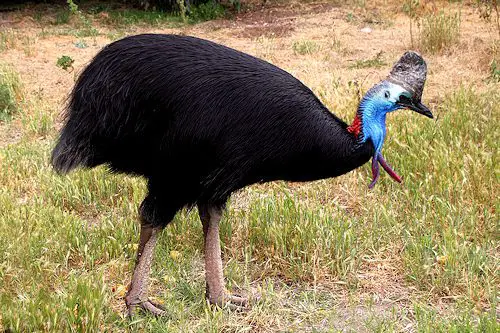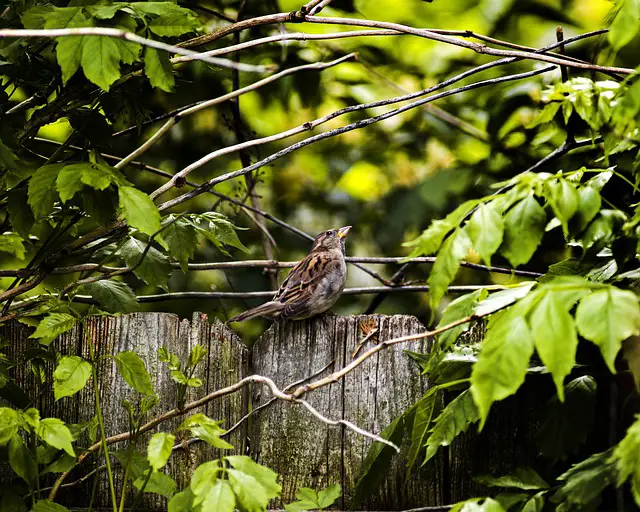The southern cassowary (Casuarius casuarius) is a large flightless bird—one that is typically found in the mainland Australia including Queensland and New Guinea. Unlike many other birds, the double-wattled cassowary is primarily known for its aggressive behavior. The cassowary is also one of the oldest living birds. It is also known as double-wattled cassowary.
Southern Cassowary Facts
Anatomy
- Unique among its features is the casque that grows on top of the bird’s head. However scientists aren’t sure about the function of casque. One reason might be that it shows the bird’s age and sheer dominance within a group. The casque helps the bird to pass through the thorny plants.
- The casque measures about 13 to 16.9 cm (5.1 to 6.7 in) in height.
- Cassowary’s feathers are quite tough—strong enough to prevent the bird from thorny plants. Young cassowary is recognized by a smaller casque.
- If cornered, they may attack the intruder with their long inner toes.
- They have shiny black plumage and red-and-blue neck. The vividly colored neck is all hairless.
- The overall length of the southern cassowary is about 50–67 in (127–170 cm).
- Females are larger than the males. The mean weight of females is 128 lb (58 kg) while males weigh up to 64–75 lb (29–34 kg)
- Male cassowaries stand 29 to 34 kg (64–75 lb) tall while females are 58.5 kg (129 lb).
- The southern cassowary has grey-green legs.
- They have 9.8 to 19 cm (3.9 to 7.5 in) long bill.

Range & Habitat
- Cassowaries are found in just about every part of northeastern Australia. The range of the southern cassowary includes Townsville (Queensland), northwestern, southern, and eastern New Guinea, Seram islands and Aru Islands.
- They make homes in the tropical rainforests at an altitude of about 1,100 m (3,600 ft). Southern cassowary also occupies lowland swamp and montane forests.
Behavior
- Southern cassowary has a territory measuring up to 0.4 – 2.0 sq. miles.
- It is thought to produce boo-boo-boo
- They live a solitary life except during the breeding season. The southern cassowary choose thick forests and they are mostly most active at dawn and dusk.
- They spend many hours resting in a bright sunny. That is not to say that the southern cassowary is nocturnal.
- Adults are territorial but they are equally shy animals.
- Southern cassowary has got dagger-like claws which it uses to drive off the predators.
- The bird can sprint at 30 miles per hour. It is also able to jump in the air.
Feeding Ecology & Diet
- The southern cassowary relies on fruit for their consumption. The captive birds eat up to 7 pounds of fruits each day. They are likely to feed on fruits that grow in the middle of the rainforests.
- They prefer to consume fruits from trees such as laurel, palm, and myrtle. The bird’s diet mainly consists of 75 different fruits. The southern cassowary needs real energy to move its heavy weight.
- Cassowaries are thought to supplement their diet with insects like snails, fungi, small mammals, birds, carrion, and invertebrates. Sometimes they also eat mulberries and bananas.

Reproductive Biology
- The southern cassowary typically breeds in June to October because fruits are abundant these months.
- Male cassowary builds a shallow nest which is typically lined with vegetation. The nest measures about 5 – 10 cm in thickness and the width averages 138 by 95 millimeters (5.4 in × 3.7 in).
- The female lays 3 – 5 eggs. Eggs hatch in about 7 weeks.
- Eggs measure about 138 by 95 millimeters (5.4 in × 3.7 in)
- The male cassowary looks after the young.
- Chicks remain with the male for about 270 days.





